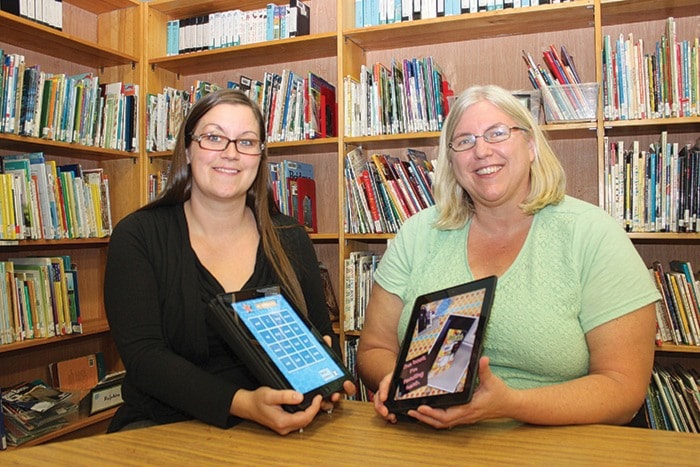The world looks different from a miniature sized chair, designed for a primary school student; and there’s no better way to gain perspective on the job at hand, when your job is transforming school libraries into learning commons.
That’s what Nanaimo-Ladysmith School District’s Val Martineau, who won the BC Teacher Librarian of the Year award in 2014, has been appointed to do for SD68 in her recently appointed role – to make libraries, and by extension schools, collaborative hotbeds of learning.
“Keep in mind that we’re just at the beginning stages of Learning Commons Space, so this is something we’re moving toward,” Martineau said over the phone, before we met with Teacher Librarian Pam Puska at Ladysmith Primary School.
So what is a library learning commons?
Martineau has a handout that shows the dozens of elements that make up a Library Learning Commons. It includes titles like: Inquiry Based Learning, Information Technology Instruction, Information Literacy, Collection Building, and Professional Leadership.
Not easy for the layperson to assemble into a clear picture. But Puska can tell you what it is not. “It’s not a quiet space where we’re only reading,” she said. Nor is it a place where you “pick a book, get your book, then leave.”
Libraries are envisaged as activity zones, where students move desks around so they can arrange themselves around a project or conversation; where the idea is to learn by doing. “It’s a little bit messier,” Puska said.
Martineau explained that the learning commons concept is a good fit with new curriculum, being implemented by school districts.
Borders only get in the way for modern learners, who have access to tools like the Internet for collaborating and sharing; new media for bringing projects to life; and – this is what will enable the potential of new technologies – educators who know how to work in an environment that deluges students with information.
Part of the strategy is to get the students to use those technologies creatively. “I think that’s part of the new curriculum, that everybody is a learner and everybody is a teacher,” Martineau said.
Students are put in leadership roles in the learning commons, she explained.
Puska used the example of a collaborative project on the Titanic. In a project like that they learn and demonstrate: story telling, fine art, videography, historical research… in short, they learn how to learn. “Look how much they know and how much they remember,” she said.
They also learn how to evaluate information coming from the Internet, how to use it properly, and how to attribute what you have used, Martineau said. “How not to Google your way through life,” she summed up.
‘Digital citizenship’ is important to the learning commons. It includes: Internet safety, web site evaluation, creating bibliographies, proper citations, use of creative commons photos and materials.
One of the most important aspects of the learning commons is how exciting it is for educators, because that kind of enthusiasm rubs off on students. “It gives me so much energy because I love co-teaching and collaborating,” Martineau said.
Added Puska: “It’s exciting to feel that you can make a difference in education. I’m not here just to provide students with a book; I can give them so much more than a book.”
Welcome to the Library Learning Commons. If you haven’t figured out exactly what it is yet, you are not alone. But one thing’s certain: for educators and students it’s exciting.
